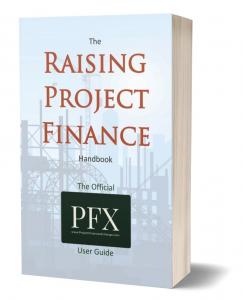Project Finance Lenders now led by Private Debt Funds
125,000+ private debt funds want to lend to renewable energy, hospital, infrastructure and other projects, but have their own specific submission requirements
It’s vitally important for those raising project finance to understand how lenders view the transaction.”
LONDON, UK, November 22, 2021 /EINPresswire.com/ -- Thousands of companies worldwide are wasting countless hours of executive time producing traditional business plans to raise project finance, largely unaware that this is not what lenders want. The $multi-trillion global project finance market is now dominated by over 125,000 private debt lenders including hedge, alternative investment and other private capital funds. From their standpoint any renewable energy, hotel, infrastructure or other project is underwritten against the financial stability and track record of whoever is contracted to buy its output, and the contractors who are going to build it. Not the assets, balance sheet, financial and marketing forecasts of the borrower. — David Rose
Consequently, they need a ‘project plan’ and not a ‘business plan’. The Raising Project Finance Handbook clarifies the project finance structure and how to assemble, produce and present the executive summary, project plan and supporting documentation (the ‘full deck’) to meet the intake requirements of private debt lenders’ deal intake and origination executives.
The handbook explains how project finance is defined as lending against revenues from a yet-to-be-built asset, a structure which excludes mainstream banks, but which meets the overriding demand of over 19 million U/HNWI investors and their fund managers for long-term, risk-mitigated returns. It also explains how the market has evolved over many decades, growing to 125,000 private debt lenders managing and allocating over $20tn of private capital. Private Debt Investor (PDI) reported in November, 2021 that just one of these 125,000 lenders, Los Angeles based Oaktree Capital Management, had just closed the largest private debt fund ever at $15.9bn.
The project finance structure includes establishing a Special Purpose Vehicle (SPV) through which all financial, legal, construction and other transactions are managed, which leaves the borrower free and clear of all financial liabilities. But they still remain the major stakeholder in the project be they a team, company, municipal or national government.
Author David Rose, a 25-year project finance veteran, explained: “It’s vitally important for those raising project finance to understand how lenders view the transaction. For example, with a waste-to-energy plant they’ll review the power purchase agreement (PPA) with whoever’s buying the energy, usually a regional or national grid, and who’s going to build it. If their track record and financial stability requirements are met, the financing can move forward to underwriting. The borrower’s assets, balance sheet and other considerations are all but irrelevant. But the project leaders obviously need to show in-depth experience relevant to the project they want to build. This applies to whatever sector it’s in. A hotel, for instance, would need a management and operating agreement for the built project with a credible hotel operator to be considered for funding.”
Projects can range across $10m senior living to $10bn+ utility-scale renewable energy. However, the biggest challenge has always been to identify, connect and engage with a funder in a hopelessly parochial, fragmented and opaque market. To overcome this the Project Finance Exchange (PFX) was launched as a structured private capital marketplace in early 2021 and now enables projects and fund managers to seamlessly connect and engage. The Raising Project Finance Handbook has now been revised to become the Official PFX User Guide, ensuring that PFX registered funds get submissions to the standards their own intake and origination executives demand.
Rose said: “The book is written in jargon-free plain English. Chapter one covers the history and development of the market so the reader can understand how their project fits into this $multi-trillion market. Another chapter presents the 15 most common mistakes made by project leaders that have brought discussions with their funders to a premature end. Hopefully The Raising Project Finance Handbook will help bring many currently capital-starved projects, across all sectors, to fruition.”
Bill Jennings
Project Finance Exchange (PFX)
email us here
Visit us on social media:
LinkedIn

